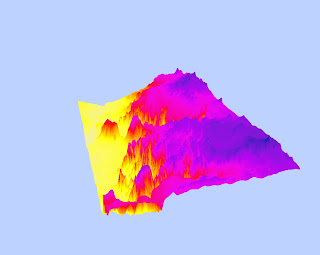 |
| White Population |
 | ||||||
| Black Population |
 |
| Asian Population |
The White population across the United States is fairly self-explanatory. The majority of the US population is white, so the percentages are quite high everywhere. The most noticeable aspects of this map are the places that are less than 40%. These areas are concentrated in the Four Corners area, probably due to Native American or Hispanic populations, as well as in the Southern United States where the Black population is quite high. There are several places that are above 93% White, especially in the North, Midwest, and Northeastern US. There are also areas that are blank, which I assume means that there is either no data available, or that there is no significant population in those areas.
The Black population is quite concentrated. Across most of the US there is less than 4%, and the high concentrations lie in the Southern US. This is where slavery was last abolished, and therefore the African American population is quite high.
The Asian population in the United States is most concentrated on the West Coast. There are also some concentrations on the Northern East Coast. Most of the country has less than 5% Asian populations, but some places on the East Coast have us to 46%. This is because the Asians historically have migrated to these areas, and there are established ethnic enclaves.
This Census map series was both helpful in mastery of ArcGIS, and informative about the US population. I find it exciting that I have access to this data, and on campus I have access to this program. Being able to make my own map of Census data has been rewarding. GIS seems like an exciting and growing field with enormous potential. Although there are pitfalls with popular access to such tools, there are far more opportunities for education and analysis. The applications are vast and the implications are huge.




















